2
Muscles of Respiration
Yoga and Breath
Breathing is the essence of yoga and one of the main reasons the practice is so vital (notice the first “awareness” of every asana pictured: Breath). Yoga consciously connects the mind and body through attention to breath work, unifying the body processes as the breath heals, nourishes, cleanses, and energizes. Called prana, the breath is the awakened life force, as compared to kundalini, the dormant energy. Yoga invests prana to discover the latent energy.
In Sanskrit (yoga’s language) breath work is pranayama, the fourth of eight limbs described in the ancient yoga sutras of Patanjali. Different techniques are used to influence the flow, rate, and volume of air through the respiratory system in a conscious way, enabling one to link the mind/body to the unconscious. Examples are Ujjayi (Ocean Breath) and Nadi Shodhana (Alternate Nostril Breath).
During asanas, the breath becomes regulated with movement: the inhalation is used to expand and the exhalation to release. The forces of prana and apana are apparent here: prana is taking breath in for nourishment and healing, and apana (“that which takes away”) is the down/out action of elimination.3
Focus on breath is also used in relaxation methods to quiet the active mind.
In The Vital Psoas Muscle (Staugaard-Jones 2012) I stated that the psoas major and the diaphragm, the main breathing muscle, come together at a point known as the “solar plexus.” This is an area around the navel and upper lumbar spine that houses a central nerve complex. Within the subtle energy system known as the “chakras,” Manipura, the third chakra, exists at this junction, where breath is a vital component. Physical, emotional, and spiritual aspects deeply connect here. Chakras will be discussed in more detail in Chapter 5.
The Act of Breathing
Respiration is the process of inhalation and exhalation, stimulating the flow of air, fluids, nerve conduction, and energetic force down to the cellular level. The mechanism is multifaceted and happens naturally.
The dome-shaped diaphragm muscle rhythmically contracts and relaxes to change pressure and volume in the thoracic cavity through the ANS, which controls involuntary actions. As one takes air in, the diaphragm contracts to allow the rib cage and lungs to expand. The diaphragm gets its signal from the phrenic nerve, causing sensation in the diaphragm’s central tendon. This area is drawn in by contraction as one inhales, which enables the thoracic cavity to increase in volume and decrease in pressure. Upon exhalation, this is reversed: the capacity is decreased and the pressure is increased, much like a balloon expelling air.
The abdominal cavity is also active. The shape of the belly and spine can change as the diaphragm pushes the belly down and out on inhalation and allows the abdominals to fall back on exhalation. In yoga this is called “belly breath,” and is accomplished when the attachments of the muscle on the rib cage, sternum, and lumbar spine are fixed. “Chest breathing” is associated with the central tendon (top portion) of the diaphragm being fixed. Other muscles also aid in stabilization and accompany diaphragmatic action.


Vajrasana (Kneeling Pose) Level I

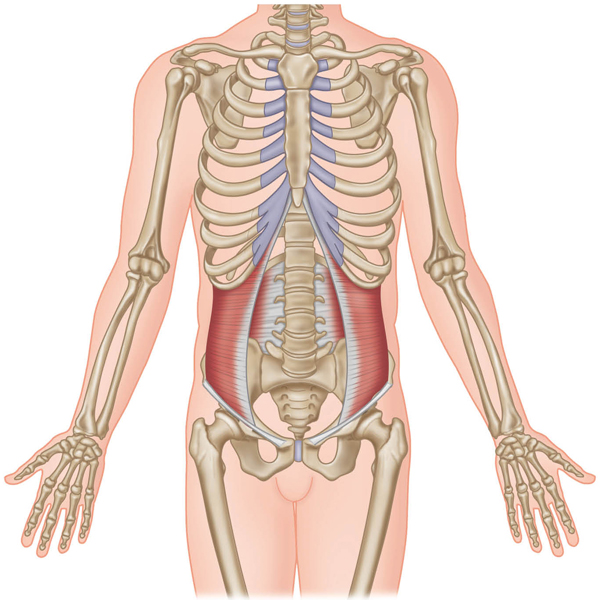
Agni Sara (Fire Cascade) Level I
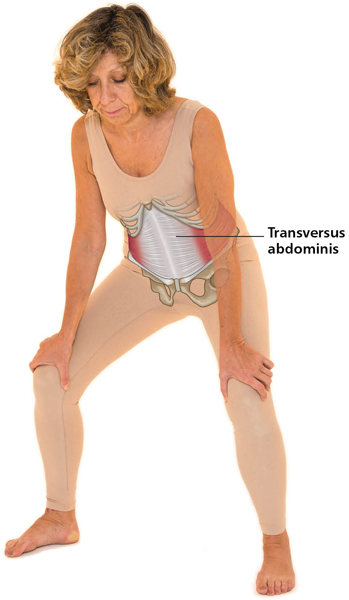
INTERCOSTALES EXTERNI (External Intercostals)
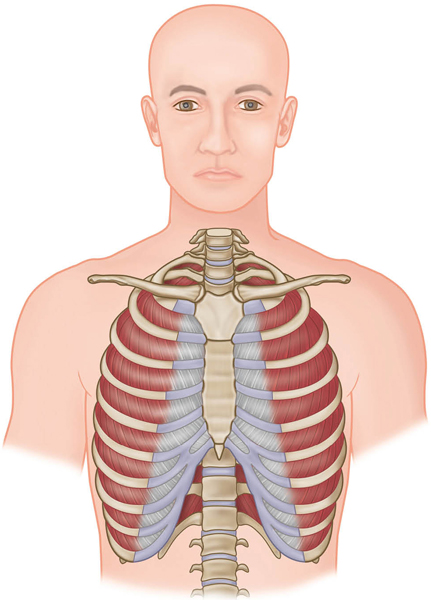
INTERCOSTALES INTERNI (Internal Intercostals)

Virabhadrasana I (Warrior I) Level I
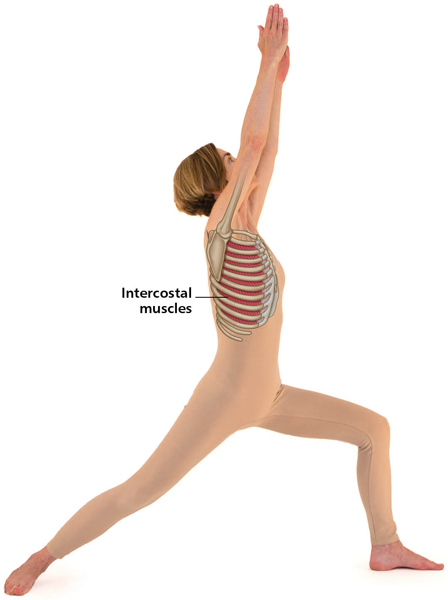
GLOTTIS AND UJJAYI
Ujjayi (Ocean Breath) is a three-part breath that takes air into the belly, then the mid-chest, and up through the upper chest; the process is reversed on exhalation. An ocean sound is created through the nostrils and resonates in the throat, as the glottis (the space between the vocal folds) is controlled by the larynx muscles to increase or decrease the area according to need. Sounds emanate from this space, as in voice pronunciation. When tension in the folds is changed, the ocean sound can be produced. Ujjayi is a warming and very grounding breath used in pranayamas and asanas.
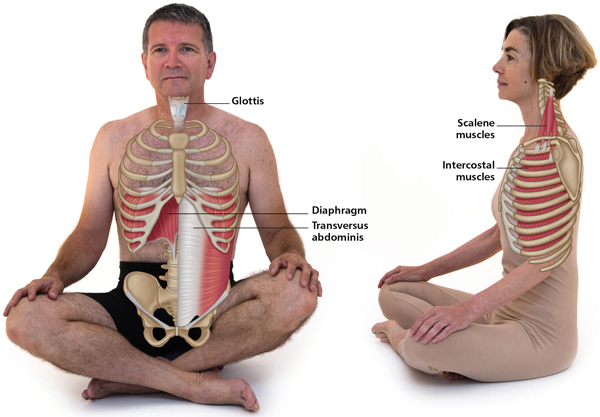
3 Prana and apana are two of the five vayus (vayu = Lord of the Winds) that are used in yoga to govern breath work through different body areas in various ways. The other three are samana (balanced breath centered around the navel), udana (upward movement around the throat), and vyana (whole body circulation and expansiveness).